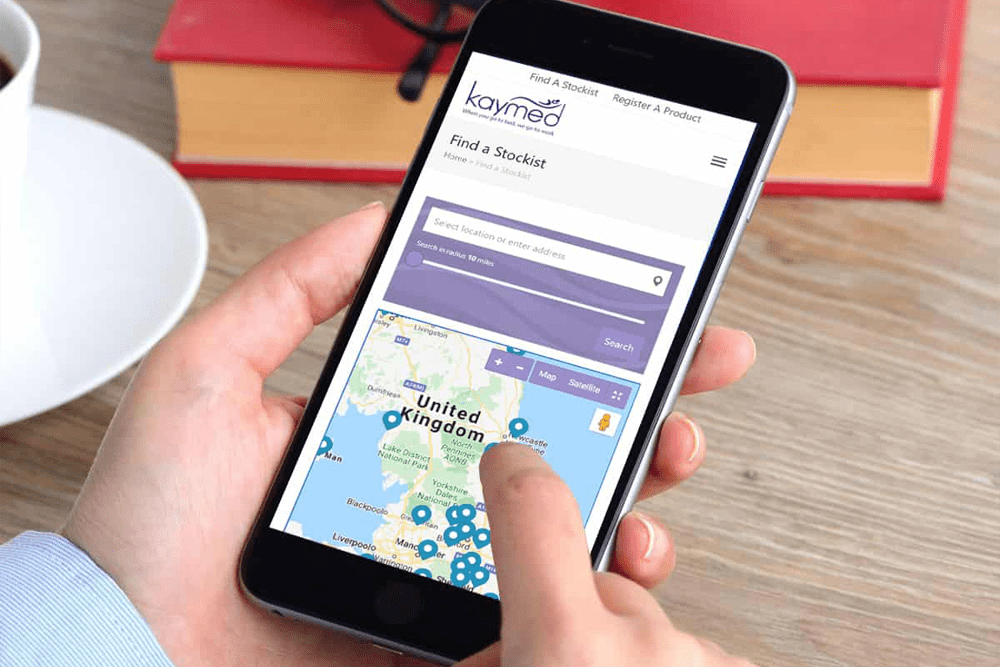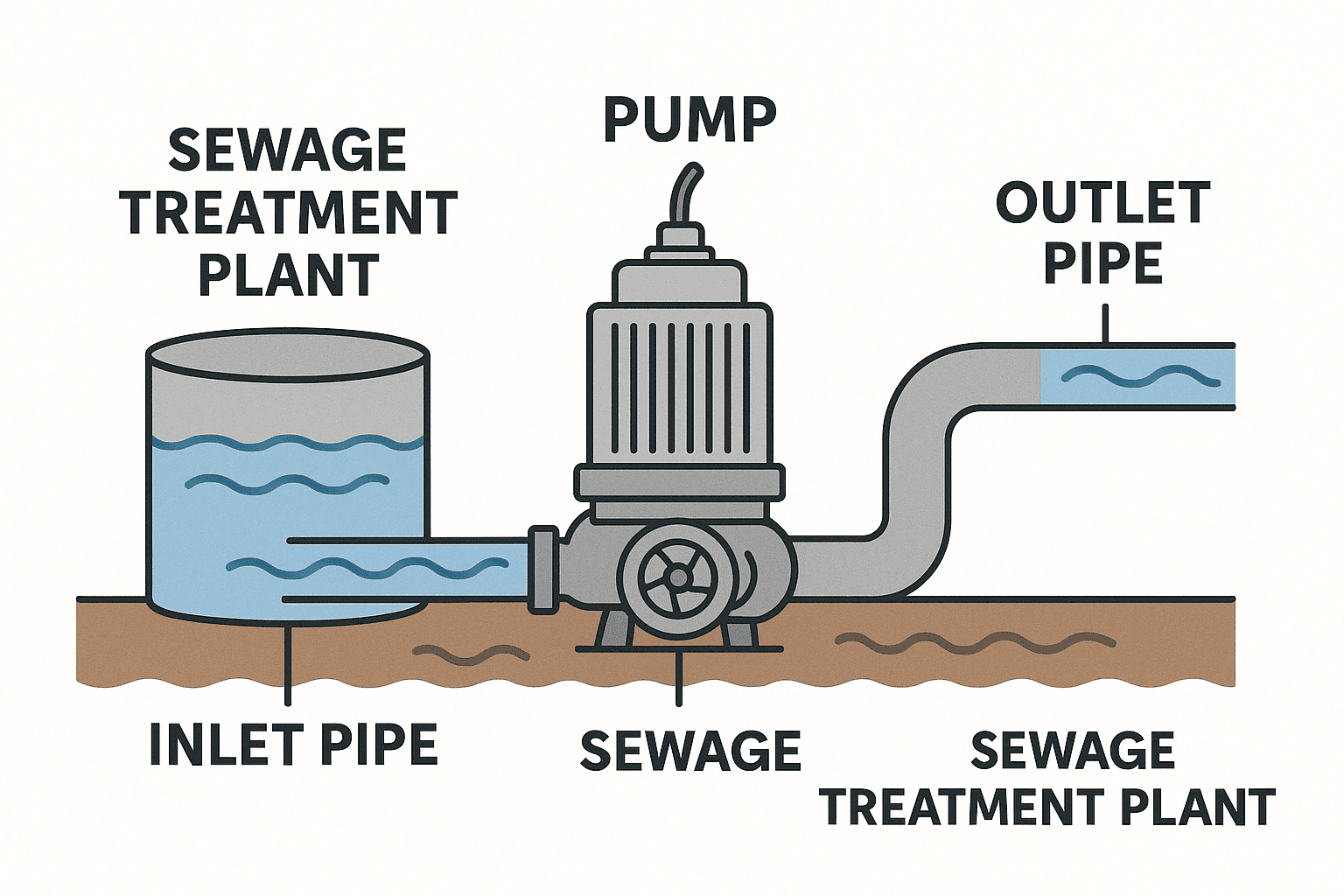Marketing is CRITICAL for SME’s
Marketing is a crucial aspect of any business, but it is especially important for small and medium-sized enterprises (SMEs) looking to compete in a crowded market. A well-crafted marketing strategy for SMEs can help them to differentiate themselves from their competitors, build their brand, and attract more customers. In this article we look at Marketing Strategy For SME’s.
However, many SMEs struggle to develop an effective marketing strategy due to limited resources, lack of expertise, and changing market dynamics. In this article, we will explore some of the best marketing strategies for SMEs, including how to define your target audience, set measurable goals, choose the right marketing channels, create compelling messages, develop a comprehensive plan, and measure your results.
- Lack of marketing expertise: Many SMEs do not have dedicated marketing staff or the resources to hire outside marketing agencies. As a result, they may not have the expertise or knowledge to develop a comprehensive marketing strategy.
- Limited resources: SMEs often have limited resources, including budget, personnel, and time. They may prioritise other aspects of their business over marketing, believing that they cannot afford to invest in marketing efforts.
- Short-term focus: SMEs may be more focused on short-term goals, such as generating revenue and managing cash flow, than long-term growth. This can lead to a lack of strategic planning, including marketing strategy development.
- Misconceptions about marketing: Some SMEs may believe that marketing is only for large companies or that it is unnecessary for their business. They may also have misconceptions about the cost and effectiveness of marketing.
- Changing market dynamics: The marketing landscape is constantly evolving, with new technologies and channels emerging regularly. SMEs may struggle to keep up with these changes, leading to a lack of marketing strategy or outdated marketing tactics.
By following these strategies, SMEs can create a targeted and effective marketing plan that helps them achieve their business goals and compete with larger companies.
Strategic Marketing Elements For consideration
- What are the appropriate approaches required to identify and evaluate the likely and possible causes of change.
- What can you do identify the opportunities and threats in the broad-scale environment.
- Analysis of market trends and segments, critical success factors the basis of competition
- Identifying customer needs and problem identification lading to a detailed understanding of their purchasing behaviour
- Competitor identification and analysis, in order to establish your competitive position
- Identifying the value networks, supply chains, possible collaborations that provide competitive advantage
- Establishing your sources of competitive advantage to allow customer value creation.
- Ensuring your brands & brand equity are developed as a key strategic asset
- Marketing Strategy For SME’s ensure that rigorous, inclusive evaluation conducted
- Are you internal capabilities, resources, systems, processes, structure, culture, and agility capable of developing strategic market requirements
- The relationship between your company and its external environment at all levels
Approaches To Formulating Marketing Strategy
- What will allow you to achieve of competitive advantage.
- The need to balance short & long term aims / performance requirements
- From what position do you need to develop the strategy, emergent, turnaround, growth, consolidation. rapid growth etc
- Market entry and development, market exit, motivation, methods.
- What is it that provide your differentiation,
- Where are you aiming to set your market positioning
- How important is branding.
- Identifying risks and opportunities
- What are sources of uncertainty and how can these be reduced,
- Marketing Strategy For SME’s how can we mitigate the risks or enhance the opportunities.
- Preventive & contingent action.
- Establishing Critical Success Factors (CSFs) & Key Performance Indicators (KPIs)
The SME Dilemma In Managing Growth
SME Growth Challenges
Research conducted recently on SME’s looked at three key business activities, with a view to identifying how companies currently spend their time against how they should if they are looking to grow.
The 3 Growth elements were
- Strategy – spending time looking at longer term challenges and opportunities
- Business Improvement – looking at ways of doing the existing systems and processes better
- Day To Day – spending time to actually get items made / services provided
The ideal time allocation for growth
The chart below shows for the 3 key areas the time that should be spent in order for the company to achieve growth
The ideal time allocation for growth
The chart below shows for the 3 key areas the time that should be spent in order for the company to achieve growth
Potential for Owner managers To Add Value |
Percentage Time That Would Ideally Be Spent |
| Strategy | 60% |
| Business Improvement | 30% |
| Day to Day | 10% |
The Typical Time Allocation By An SME
The chart below shows for the 3 key areas the actual amount of time that most SME’s spent on the activities
Potential for Owner managers To Add Value |
Percentage Time That Would Ideally Be Spent |
| Strategy | 1% |
| Business Improvement | 9% |
| Day to Day | 90% |
How much time do you spend on strategic thinking?
Go on be honest think about the time you spend
Potential for You To Add Value |
Percentage Of Time You Are Spending On Each Activity |
| Strategy | ? |
| Business Improvement | ? |
| Day to Day | ? |
Would You Could Benefit From An Improved Strategy
The SME Dilemma In Managing Growth
We find that many SME clients benefit from the discipline of having structured strategy sessions to help in the development and growth of their business. Why not click here Andrew Goode now on 01733 361729 and take out 10 minutes to talk about your current strategy for growth. Unless things change it might be the only strategic thinking you do this month.
Innovation & Differentiation as part of the Marketing Strategy
Innovation and differentiation are essential components of a successful marketing strategy for small and medium-sized enterprises (SMEs). Here’s why:
- Stand out in a crowded market: In today’s competitive marketplace, it’s essential for SMEs to differentiate themselves from their competitors. Innovation and differentiation in marketing can help SMEs to create a unique selling proposition that sets them apart from their competition and makes them more attractive to potential customers.
- Address customer needs: By innovating and differentiating, SMEs can better address the needs of their target audience. They can create products or services that better meet customer needs, communicate their unique value proposition, and build stronger relationships with their customers.
- Boost brand awareness and loyalty: An innovative and differentiated marketing strategy can help SMEs to build their brand awareness and loyalty. By standing out in the market, SMEs can increase their visibility and create a more memorable impression with potential customers. They can also strengthen customer loyalty by providing a unique and valuable experience that cannot be found elsewhere.
- Improve customer acquisition and retention: A marketing strategy that emphasizes innovation and differentiation can help SMEs to acquire new customers and retain existing ones. By providing a unique and valuable offering, SMEs can attract new customers and increase their retention rates, resulting in higher revenue and profits.
Innovation and differentiation are crucial components of a successful marketing strategy for SMEs.
By differentiating yourselves from your competition and innovating to meet customer needs, SMEs can build a strong brand, improve customer acquisition and retention, and ultimately grow their business.
Innovation Myths And There Impact
Rising customer expectations & Increased Competition
With customers becoming more demanding, competition increasing and a whole raft of business challenges there has never been a better time to innovate within your business.
As I visit manufacturing sites and companies across the UK I have come across the following innovation myths.
Seven Innovation Myths
Myth 1: Innovation is a ‘nice to do’ rather than a ‘must do’ activity
Fact: Those companies that have a systemised process to innovation are making business improvements that over time will give them a competitive advantage
Myth 2: Its always about the BIG idea
Fact: Linking in with my article the other day about The England Rugby team, its all about achieving steady continuous improvement
Myth 3: A great idea is instantly recognisable
Fact: Unfortunately with the pressures of business sometimes it rrquires a number of re takes before we identify the potential behind a suggestion
Myth 4: Innovation is about new products and technologies
Fact: Innovation can mean
- Production process improvements
- Customer service improvements
- New business models
- Alternative / new routes to market
Myth 5: Good ideas only come from within an organisation
Fact: In most cases the innovation system can be enhanced when employees, partners, suppliers and customers become involved
Myth 6: Innovative ideas only come from senior management
Fact: Being innovative isn’t a minority activity. All employees have something to offer. What we need to recognise is that this shows itself in a variety of persona’s.
- The ideaser’s people – will constantly come up with ideas (the challenge is focussing on those with potential)
- The builders – are constantly negative but can provide a valuable perspective as to why something wont work
- The screener’s – provide a critical review on the range of innovations suggested
- The implementers – will take the innovations identified and agreed and make sure they happen
The challenge is to make sure you develop a team that recognises the skill set of each person, so that you maximise the power of the team.
Myth 7: Innovation is only for large companies like 3M and we are to small
Fact: Innovation isn’t dependent upon business size, what evolutionary improvements can you identify and implement
6 ways to help make innovation work within your company
- You need to systemise and make it part of a continuous long term programme
- The organisation needs to have an innovation culture where people who try something different are rewarded not penalised
- A transparent screening process needs to be in place so that if an approach isn’t implemented those involved understand why and continue to participate
- If an innovation activity leads to a quick win great. A quick win is still a win
- Avoid the implementation void where buy innovation is discussed but the ideas never find the market place
- Where you have innovation success communicate it to all
Innovation Myths And There Impact On Business
If you would like to increase the level of innovation within your company perhaps an innovation and creativity workshop could help kick start the process.
10 Top Strategies To Make Absolutely Sure You Achieve Your Goals This Year
Some Basic Goal Achievement Principles
- You need to know what you want
- You need to know why you want it
- You need to believe you can do it
From the perspective of knowing what you want this is where SMART objectives should be set. For those who haven’t heard of SMART objectives before the acronym stands for S: Specific M: Measurable (some may prefer the concept of score) A: Achievable or Attainable, R: Realistic, T: Time based
10 Top Goal Achievement Strategies
- What can you do NOW – Strike while the iron is hot
- Good, Bad and Ugly – lets use the example of trying to lose weight and you want to stop eating biscuits (something that you love to eat and once you start you find it hard to stop)
- Good – you don’t eat any biscuits
- Bad – you eat 3 biscuits
- Ugly – eat whole packet of biscuits
- If you flip the commitment the challenge becomes not to eat the whole packet
- Make the goal achievable
- Lets imagine that you want to get fit so you decide to set a goal of I will go to the gym 3 times a week for 90 minute sessions
- The problem occurs when you find that you cant fit a 90 minute session then the chance is you will miss your session
- If you change the goal to I will go to the gym 3 times a week
- Then if you find that you are short of time you can at least go to the gym even if you only exercise for 30 minutes
- Lets imagine that you want to get fit so you decide to set a goal of I will go to the gym 3 times a week for 90 minute sessions
- Use the acronym GPAD
- G = Goal – set your SMART objectives
- P = Plan – formulate a plan
- A = Action – successful people take action
- D = Diary – if you cant take the action immediately put it in the diary to complete
- Make a key goal a tradition
- When an activity becomes a tradition it is much more likely to be carried out i.e. it becomes a habit which means it is less likely to be ignored or substituted for another activity
- Cues to help in the process
- Can you change the environment
- When do actions take place. For example rather than looking at e mails as they come in why not look at them at specific times during the day
- Immediately proceeding action. What happens before you carry out your action
- Emotions – how can you change them
- Find a technique to act as a memory jogger. there may be some technology or an app for your phone that can help prompt or remind you when you are required to complete an activity
- Will Power Leverage an approach to assist you when your will power at its weakest. For example lets imagine that you love to snap up a bargain and will excessively use your credit card to snap up a bargain. Put your your credit card in a glass of water in the freezer. When you next get the urge to go shopping you will have to wait for your credit card to defrost which could provide you with time to cool down and decide that you don’t need to go shopping
- GOOD, BAD, GOOD, BAD
- I find this a really nice approach and apply in the following way. If I want to go out for a pint of beer (bad) then I will have a pint of water (good) first. So water, beer, water, beer etc
- Essentially if you know you are going to have / do something bad then you do something good first
- Increase the pain for not achieving your goal. Quite often if you don’t achieve the goal you set then there is limited consequence for this failure. Now if you decide that if you fail to achieve your goal you will pay a financial forfeit to a charity (that you wouldn’t want to support ) then that additional pain may increase the desire to achieve your goal
Want to pick up the phone and speak to us about your Website project?
Call us on: 01733 361729 mail: solutions@bdolphin.co.uk
The A to Z of Gaining More Sales
26 A To Z Tips To Gain More Sales!
- A – Assume nothing. Ask the right questions to determine what exactly your prospect’s needs are and where they are in the buying process
- B – Benefits are what a customer is typically purchasing. What pain is your product / service solving and why should they buy it from you!
- C – Clarity . Confirm and clarify that you have understood your customers needs and confidently covered all objections
- D – Don’t delay. Once you have seen a prospect get a proposal out as soon as possible and follow up the sales process. Every additional day you delay can reduce your chance of sales conversion
- E – Effort, it typically takes 8 points of contact to make a sale. Just sending out a mailshot isn’t actually a sales process! Make sure that you allow for the sales effort that will be required
- F – Focus on what makes you different / better
- G – Go for it. Sales are tough sometimes you just have to make that phone call, try for that appointment or be brave. What’s the worse that can happen.
- H – Happy Happy Happy. If you enjoy what you do and have fun doing it you will possibly have more success. Note there are a number of sectors where this possibly isn’t the case in which case Empathy Empathy Empathy
- I – Integrity in what you do and how you act is absolutely essential if you are to achieve long term sustainable sales
- J – Join in. People buy from people (they know and like) in many cases. Therefore getting out there and joining networking groups, specialist groups , the golf club, on line forums and joining in is a crucial part of meeting people and developing relationships
- K – Kill activities that are not adding value to the sales process. CRM systems should save you time and make sales more productive. Your website shouldn’t be a sales prevention tool. If it isn’t helping you in sales kill it and find something better.
- L – Listening. You have two ears and one mouth and they should be used in that ratio. Listening is a key skill for every person in business not just salespeople
- M – Marketing is a fundamental approach to help sales. Who are your target customers? Why should I buy a product / service from you? How do you compare to the competition? To achieve more sales make sure you have a robust marketing strategy
- N – Notes. If you are having a meeting that involves anything complex make sure that you take notes. Direct onto the IPad, into your phone, using traditional pen and paper. If you are involved in discussions with a client record key actions.
O To Z Tips To Gain More Sales!
- O – Objection handling is a key skill to master. If you struggle with handling objections would a training course give you more confidence.
- P – Pricing is a key sales issue. If your product / service is more expensive but better robust marketing knowledge will give you the power to overcome pricing objections. If your product / service is poor and more expensive then it is always going to be a difficult sales so more strategic marketing required
- Q – Questions are a key element to identify a customers pain points. Ask open questions and then listen
- R – Referrals will build your business, if you have delivered a great product / service don’t forget to ask for a referral. If you can get a video testimonial at the same time that will also be useful
- S – Segmentation. Not all customers are the same. being able to identify, group and then personalise the approach to suit the segment should lead to improved sales interaction
- T – Training is critical. Sales and Marketing are both skills that come naturally to some but for others training will significantly enhance performance
- U – Understanding your customers needs and values will help you offer an appropriate solution!
- V – Vocals are very important, vary the pitch, the tone and the speed of content you deliver.
- W – Websites are a critical part of the sales process. In B2B the likelihood is that a prospect has already visited your website before they give a call (If you have a poor website they might not even contact you!!)
- X – X factor, what makes your product and services special. Your strategic marketing activities should be able to identify what makes you different
- Y – You Tube is a great resource for adding authority content. A high quality video that clearly explains your product or service may help shorten the sales process
- Z – Zoom in on building the relationships with the prospects you believe are looking for a long term relationship
Marketing Strategy for SME’s
Creating a marketing strategy for a small or medium-sized enterprise (SME) can be a straightforward process. Here is a super simple approach to get you started:
- Define your goals: Begin by clearly identifying your marketing objectives. What do you want to achieve with your marketing efforts? Examples could include increasing brand awareness, generating leads, driving website traffic, or boosting sales.
- Understand your target audience: Determine who your ideal customers are. Consider their demographics, preferences, needs, and behaviors. This information will help you tailor your marketing messages effectively.
- Research your competition: Study your competitors to understand their strengths, weaknesses, and marketing tactics. Identify what sets your business apart and how you can position yourself uniquely in the market.
- Craft your key messages: Develop clear and compelling messages that communicate the value of your products or services. Highlight the unique selling points that resonate with your target audience.
- Select marketing channels: Consider the most suitable channels to reach your target audience based on their preferences. This could include social media platforms, email marketing, content marketing, paid advertising, or traditional methods such as print or radio.
- Allocate your budget: Determine how much you can allocate towards marketing activities. It’s crucial to be realistic and consider the potential return on investment (ROI) for each channel.
- Implement and track: Start executing your marketing initiatives across the chosen channels. Set up tracking mechanisms to monitor the performance of your campaigns. This could include website analytics, social media metrics, or sales data.
- Evaluate and optimise: Regularly review the results of your marketing efforts. Identify what is working well and what needs improvement. Make data-driven decisions to optimise your strategies and refine your approach over time.
While this provides a simplified outline, the effectiveness of your marketing strategy will depend on factors such as your industry, target market, and available resources. Stay adaptable and be willing to adjust your approach as needed. If you want more help on implementing marketing strategy for SMEs contact us for a FREE informal discussion
















